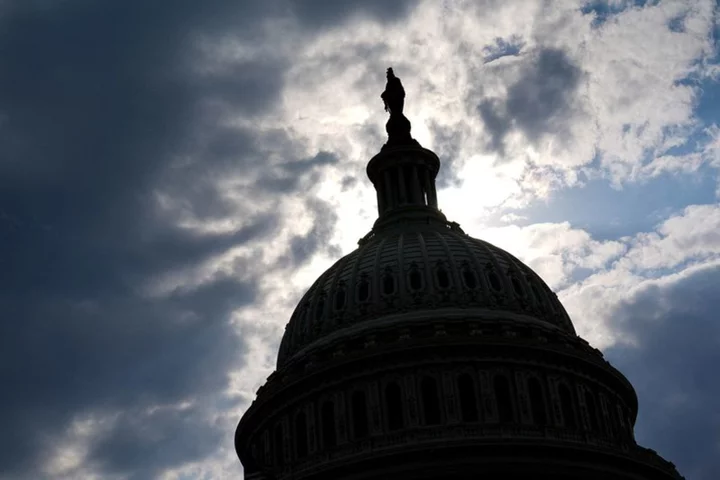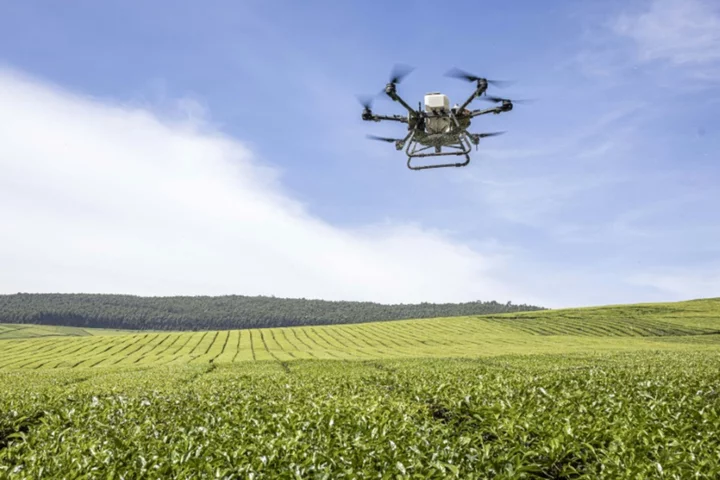By Howard Schneider
AMELIA ISLAND, Florida The pummeling taken by bank bond portfolios during more than a year of rising interest rates fueled worries this spring after the collapse of Silicon Valley Bank that a spiraling financial crisis might soon develop and crash the U.S. economy.
New research, though, indicates those investment losses - most of them unrealized - were offset nearly dollar for dollar by the benefits of cheap deposits that kept core bank operating margins steady.
In the view of Philipp Schnabl, a professor at New York University's Stern School of Business and the author of the study, it was evidence that fears about an impending financial crack-up may be overstated.
But it also adds to a growing set of indicators that Federal Reserve officials and economists cite as reasons the current economic cycle may defy historical norms and continue to outperform expectations just as it has defied other easy predictions.
From the job market to consumer behavior to the financial sector, officials and economists at an Atlanta Fed conference on Amelia Island, Florida this week laid out a variety of ways in which the economy is behaving differently than before. In conference proceedings and separate interviews, they spoke of an economy that is holding up better than expected in the face of rising borrowing costs and may yet overcome a bout of high inflation without a major meltdown.
"There are a lot of things about this inflation that we're still trying to understand," Chicago Fed President Austan Goolsbee said during a forum at the conference. "Mocking the 'immaculate disinflation' is a mistake because there was a large component that was 'immaculate inflation'" driven by supply-side and other shocks that were unique to the COVID-19 pandemic.
Unwinding those influences "gives us some potential to have a 'soft landing' of a form that would definitely be unusual," Goolsbee said, referring to a scenario in which monetary tightening slows the economy, and inflation, without triggering a recession.
'AGAINST HISTORY'
Debate over how much damage, if any, U.S. central bank rate increases might do to the job market and economic growth to get control of inflation has been intense at times.
Veteran policymakers, like former Treasury Secretary Larry Summers and Nobel Economics Prize winner Joseph Stiglitz, have taken almost opposite views: Summers saying unemployment needs to rise significantly for inflation to die, and Stiglitz mapping out why the pandemic makes this time different.
The risks are central to the Fed's debate of whether to pause or continue with rate increases, and the outcome is far from resolved. Schnabl's study, for example, leaves open the possibility that bank metrics could change fast as deposits become more expensive.
Just how it plays out could shape a 2024 U.S. presidential election that may be conducted under either the incumbent-killing shadow of rising unemployment and high inflation, or the bluer skies of a strong job market and reasonably stable prices.
Research on past periods of high inflation indicates it may take a recession to regain control. Fed Chair Jerome Powell acknowledged in a recent press conference that some of the best outcomes hoped for by the central bank "would be against history."
Yet with roots in a once-in-a-century health crisis and the unprecedented government response to it, some argue that the abnormal onset of inflation in 2021 may allow for an abnormal resolution.
'CLEAR SIGNS OF IMPROVEMENT'
In a view from the "optimistic side" of an economic forecasting community widely expecting a recession, Jan Hatzius, chief economist at Goldman Sachs, said during a panel presentation on Amelia Island that his expectation is "the economy continues to expand even with inflation subsiding."
The bank credit crunch, Hatzius said, is real but expected to subtract only about four-tenths of a percentage point from economic growth, which he projected recently would still hit an above-consensus 1.6% this year.
At the same time, he said the job market is showing an "unprecedented" break from past behavior with a steady drop in job openings without any rise in the unemployment rate.
Inflation is "starting to see clear signs of improvement," Hatzius said, with an "exceptionally benign" set of changes that are creating a gradually softer labor market even with a low 3.4% unemployment rate.
The big unknown is whether that continued job market health is consistent with inflation falling steadily from its current levels above 4% back to the Fed's 2% target.
SPARING THE FRONT LINES
Richmond Fed President Thomas Barkin, in a Reuters interview, said in revising his forecasts for this year he has included both slower economic growth and a lower unemployment rate than he initially anticipated, an unusual combination.
The layoffs that seem to be underway, he said, suggest job losses are concentrated in white-collar occupations among people better able to sustain spending or even take a break from work, while hiring continues in the front-line service jobs most scarred by the pandemic.
"You're not seeing front-line people get laid off. You're seeing professionals get laid off," Barkin said, a group he feels is less likely to file unemployment claims and more likely to take time off for further training or other activities.
That could allow the job market to cool without as much of a rise in unemployment as might otherwise be the case.
Economists and policymakers at this week's conference pointed to other factors adding to the case for a soft landing.
Industries like construction that usually take a dive as housing declines have seen jobs hold up as building rotates to public-sector and infrastructure projects. Households still have perhaps $500 billion of pandemic-era savings, their leverage is low and cash flow has been improved by mortgage refinancing when interest rates were at record lows, savings that can support spending now.
Even policymakers who see a soft landing pathway aren't certain they can navigate it or that shocks from bank credit or other parts of the economy won't ultimately cause the recession they hope to avoid.
But at this point the "uncertainty" about what's at work in the economy could, some officials feel, mask developments that are working in their favor.
"The dynamic that we have today is really idiosyncratic and it means that we have strength in parts of the economy that you don't usually have when we're in this part of a policy cycle," Atlanta Fed President Raphael Bostic said in an appearance with Goolsbee. "That's why I have some confidence ... we can see inflation get back to our target without having the typically large level of disruption."
(Reporting by Howard Schneider; Editing by Dan Burns and Paul Simao)









